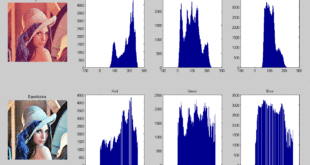Being able to converse with people who don’t speak English is essential for the Army, since every day, Soldiers are partnering with militaries in dozens of countries around the world. A number of speech-translator devices are available commercially, and Soldiers have been using them. However, speech translators are seldom completely accurate and problems can arise in places where the population converses in a dialect, a form of a language that is specific to that region, according to Dr. Steve LaRocca, a team leader at the Multilingual Computing and Analysis Branch at the Army Research Laboratory.
Imagine a handheld device that can translate any language in real time, like having a translator at your disposal at all times. DARPA’s Broad Operational Language Translation (BOLT) program is aiming to do just that. The technology can be deployed on an Android device. An English-speaker can say a phrase and the device can repeat it back in another language, and vice versa. The system currently only works with Iraqi Arabic, but DARPA says it can easily be expanded to others in the future.
Broad Operational Language Translation (BOLT)
Expanded global access to diverse means of communication is resulting in more information being produced in more languages more quickly than ever before. The volume of information encountered by DoD, the speed at which it arrives, and the diversity of languages and media through which it is communicated make identifying and acting on relevant information a serious challenge. At the same time, there is a need to communicate with non-English-speaking local populations of foreign countries, but it is at present costly and difficult for DoD to do so.
Natural language processing technologies have the potential to enable cross-cultural communication, but current technology is insufficient to the task of handling informal language. In October 2011, DARPA launched the Broad Operational Language Translation (BOLT) program to attempt to create new techniques for automated translation and linguistic analysis that can be applied to the informal genres of text and speech common in online and in-person communication.
BOLT is aimed at enabling communication with non-English-speaking populations and identifying important information in foreign-language sources by: 1) allowing English-speakers to understand foreign-language sources of all genres, including chat, messaging and informal conversation; 2) providing English-speakers the ability to quickly identify targeted information in foreign-language sources using natural-language queries; and 3) enabling multi-turn communication in text and speech with non-English speakers. If successful, BOLT will deliver all capabilities free from domain or genre limitations.
DARPA’s Robust Automatic Transcription of Speech (RATS)
The Pentagon could be able to listen in on voice communications in difficult environments and then quickly translate and transcribe them for use by intelligence analysts and combat troops by 2017, according to the Defense Advanced Research Projects Agency.
Newly released DARPA documents show it is continuing the next two stages of its Robust Automatic Transcription of Speech program, which is aimed at separating speech from background noise, determining which language is being spoken and then isolating key words from that speech for analysis, reports Ray Locker in USA TODAY.
Existing speech signal processing technologies are inadequate for most noisy or degraded speech signals that are important to military intelligence. The Robust Automatic Transcription of Speech (RATS) program will create algorithms and software for performing the following tasks on potentially speech-containing signals received over communication channels that are extremely noisy and/or highly distorted:
- Speech Activity Detection: Determine whether a signal includes speech or is just background noise or music.
- Language Identification: Once a speech signal has been detected, identify the language being spoken.
- Speaker Identification: Once a speech signal has been detected, identify whether the speaker is an individual on a list of known speakers.
- Key Word Spotting: Once a speech signal has been detected and the language has been identified, spot specific words or phrases from a list of terms of interest.
The fourth and fifth phases, DARPA says, will take the system into the field to determine the difference between real speech picked up in the field and that developed for the laboratory. The latest developments, the agency says, work well in the field but suffer “a great degradation in accuracy from the performance on lab data.
References and Resources also include
https://www.darpa.mil/program/broad-operational-language-translation
 International Defense Security & Technology Your trusted Source for News, Research and Analysis
International Defense Security & Technology Your trusted Source for News, Research and Analysis


